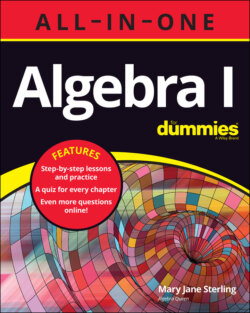Читать книгу Algebra I All-in-One For Dummies - Mary Jane Sterling, Mary Sterling Jane - Страница 83
Using the box method
ОглавлениеThe box method is a very nicely structured process that has an added bonus. You can use it to find the least common denominator of two or more fractions, and you can also use it to find the greatest common factor of two or more numbers.
Consider the addition problem . You don’t want to multiply them all together. And, yes, you could look at multiples of the largest denominator. But, as an option, look at the box method.
1 Write the three denominators in an “upside-down” division box.
2 Outside the box, on the left, write a number that divides all of the denominators evenly.For this first try, I’ll use 2.
3 Divide 2 into each denominator, putting the quotients under the respective denominators.
4 Now put a division box around these quotients and find another divisor. Repeat the process until there are no more common factors.This time I chose 3. The order of choices doesn’t really matter.One more time:
5 You’re finished when the quotients don’t have any common factors. All three have to have the same common factor. You can’t divide just two of them.
So, what do you have here? First, you have the greatest common factor of the three numbers: . You multiply the divisors, the numbers down the left side, and get the biggest number that will divide all three numbers evenly.
But you’re looking for a common denominator! To get that, find the product of those three numbers in the GCF times the product of the three numbers left on the bottom.
The least common denominator is: . This method is a bit nicer than looking at all the multiples of 96.
